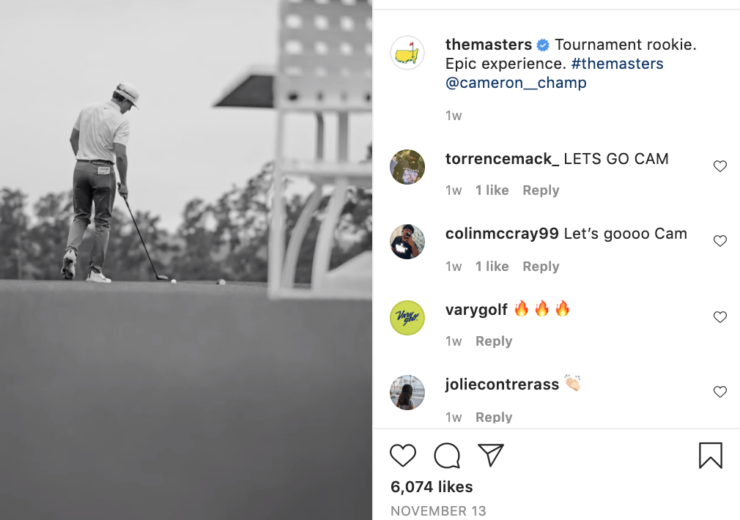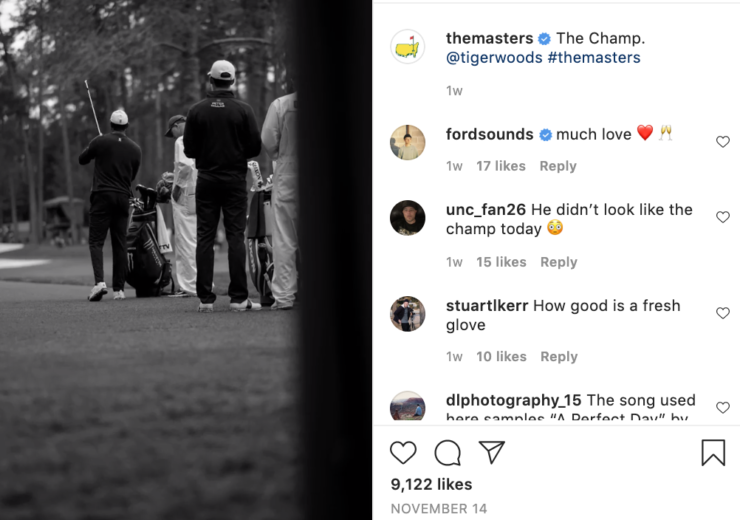Digital channels have played a key role in how teams, leagues and other sports properties have stay connected to fans in a year that has been anything but ordinary. Priorities have shifted with no fans in stands — and it’s brought about unique challenges that have propelled new focus on content and digital.
In a tournament unlike any other year before, The Masters used their channels to elevate their brand and bring fans closer to the event. They put on a masterclass on the power of the platforms. There are many things to take away from their approach, from an excellent AR activation to beautiful photography on Instagram. Today, though, the focus is on their video approach.
So often, video is produced for video’s sake. And in a medium that requires a lot of time and resources (usually), it’s essential to know when to leverage video and how to create pieces that engage your audience. It’s rare to see a brand crank out video at a high volume and consistently nail it.
The Masters is one of these rare exceptions. They did an incredible job leading into and surrounding this year’s tournament with video that consistently delivered. The tone, the narrative and the attention to detail was second to none. So, what worked so well about their video approach? A few things that stood out to me:
They produced oddly-satisfying content.
First, The Masters had a series of video vignettes leading into the event that focused on all the prep details. The content gave a behind-the-scenes look at what it takes to prepare for the Masters. The real beauty of the vignettes, though, was that they were oddly mesmerizing. And oddly, satisfying content pulls people in and keeps them engaged.
Not only were these videos oddly mesmerizing, but the pace and tension fit their brand. There’s something beautiful and classic about golf, and these videos were able to evoke the beauty in the game and the event without even seeing a single swing. They built anticipation for the coming event in a tone and pace that they could distinctly own. Take a look at a few of them:
They found the right narrative.
Second, the Masters did an incredible job with their storytelling pieces. They found a way to tell the narrative around this year’s event and in a way that was not ad-like or manufactured. The script and VO, paired with the beautiful visuals, pulled you in and placed you in the moment. The pieces felt like a Tom Rinaldi feature on College Gameday — a blend of journalism, storytelling and a whole lot of emotion.
These videos also struck the right tone in a year that has been unlike any. They walked up to the unprecedented year when they needed to and found the right balance of somber and opportunistic. The videos allowed their audience to feel the excitement of the event that was to come while still acknowledging the adversity and challenges face. I believe that sport is a great connector for people — and often a provider of hope — and The Masters used their platform and their storytelling pieces to do just that (without being tone-deaf).
They tapped into a creative format that felt intimate.
Video style and execution plays a key role in what fans take away from the piece. And, I love it when I see teams and brands experiment with different formats to convey different emotions and scenarios.
On Instagram, The Masters experimented with a creative style of video that felt intimate and brought fans inside the moment. The videos were black and white, had some stop motion and were shot in a way that made the viewer feel like a fly-on-the-wall. While they didn’t lean heavily into this execution, it’s a good example of how you execution matters. Testing, trying and experimenting is key.


This post scratches the surface on everything The Masters did leading into and during the event on social media. Hopefully, though, it spurs some inspiration as your thinking through video ideas and concepts.
Video can be an incredible tool for brands to articulate who they are and what they stand for, but the vision and purpose must be clear. Video can’t be created for video’s sake. The Masters did an incredible job leveraging video to pull their audience in and place fans in the moment in a year where everything was virtual. And, it was clear they had a why for creating.
What stood out to you about The Masters’ approach on social this year? Please share below.